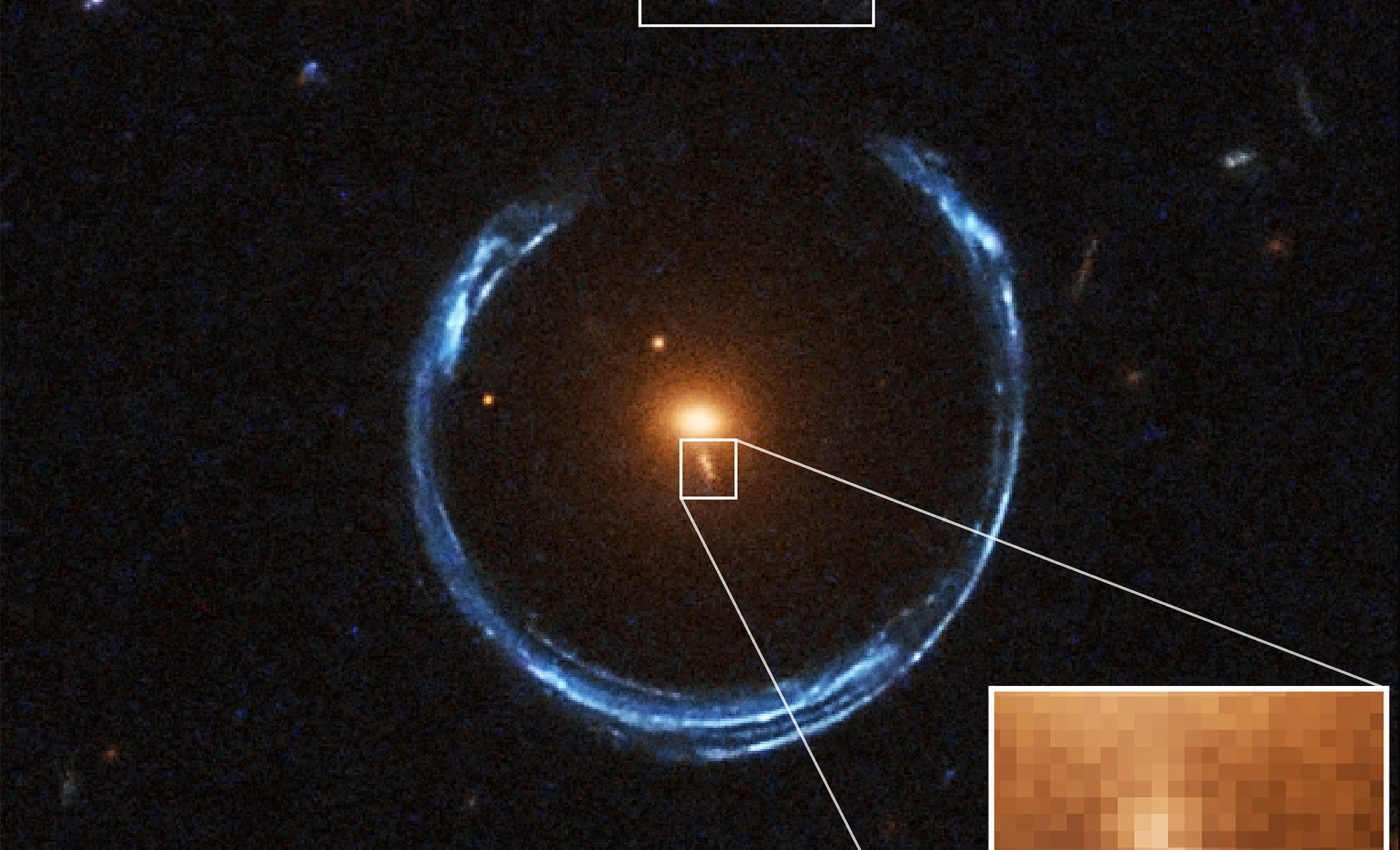
Astronomers discover the largest 'ultramassive' black hole ever seen
Astronomers have uncovered what may be the heaviest black hole ever directly measured. Located at the center of a galaxy nearly six billion light-years away, this ultramassive cosmic monster is estimated to weigh in at 36 billion times the mass of our Sun.
This discovery was made in the foreground galaxy of a rare gravitational lensing system known as the Cosmic Horseshoe, which was first identified in 2007.
The new research, led by Carlos R. Melo-Carneiro from the Institute of Physics at Federal University of Rio Grande do Sul, used a combination of gravitational lens modeling and detailed stellar dynamics to pinpoint the ultramassive black hole (UMBH) lurking at the center of the lensing galaxy.
What is the cosmic horseshoe
The Cosmic Horseshoe is a near-perfect example of a gravitational lens: a phenomenon where the gravity of a massive foreground galaxy bends the light of a background galaxy.
In this case, the background galaxy appears as a luminous arc encircling the lensing galaxy, forming what’s called an Einstein Ring.
The lensing galaxy, named LRG 3-757, is what astronomers refer to as a luminous red galaxy. This is a giant elliptical galaxy that shines brightly in infrared light and contains very little star formation.
LRG 3-757 is not only huge, about 100 times more massive than the Milky Way, but is now also known to host one of the largest black holes ever measured.
Measuring the ultramassive black hole
Black holes, especially the largest ones, are notoriously difficult to measure. Researchers typically rely on the motion of nearby stars and gas to estimate how much mass must be present to account for their velocity.
But at vast distances like this one, over five billion light-years away, direct observations are challenging.
Melo-Carneiro and his team took a different approach. They used detailed data from the Multi Unit Spectroscopic Explorer (MUSE) instrument on the Very Large Telescope, paired with high-resolution images from the Hubble Space Telescope, to create a combined model of the galaxy’s mass.
The key innovation was incorporating both the gravitational lensing distortion of background light and the motion of stars within the lensing galaxy itself.
The result was a precise mass estimate of the central black hole, weighing in at an astonishing 36 billion solar masses.
Beyond what was thought possible
Astronomers have long known that supermassive black holes lie at the centers of most large galaxies.
Their masses tend to follow a predictable trend based on the speed at which stars move in the galaxy’s center, a relationship called the MBH–σe relation, where σe stands for the effective stellar velocity dispersion.
But the black hole in LRG 3-757 doesn’t play by these rules.

This black hole’s mass is about 1.5 standard deviations above what the MBH–σe relation would predict, based on the velocity dispersion of 366 km/s.
That’s a significant outlier. It suggests something unusual happened in the galaxy’s past or is still happening now.
Why this ultramassive black hole is so big
Several theories might explain this deviation. One possibility is that LRG 3-757 underwent a dramatic history of mergers.
During such events, central black holes from each galaxy can eventually merge, while gravitational interactions fling nearby stars outward, a process known as scouring. This can inflate the black hole’s mass without increasing the average stellar speed.
Another explanation is that AGN feedback, when an actively feeding black hole pumps energy into its surroundings, disrupts star formation and changes the internal structure of the galaxy.
There’s also a chance that this black hole is a fossil remnant of an ancient quasar, an early universe black hole that grew rapidly by consuming large amounts of matter.
In this scenario, LRG 3-757 could once have been far more active, with the black hole gaining mass much faster than its surrounding stars could evolve.
Deviant ultramassive black holes
This study adds to a growing list of ultramassive black holes that deviate from the expected galaxy-black hole scaling laws. But what makes this finding special is its distance.
We see the Cosmic Horseshoe as it was over four billion years ago.
That places it significantly earlier in the universe’s timeline than most direct mass measurements of supermassive black holes (SMBHs). It is also one of the most massive black holes ever directly measured at any redshift.
New tools will soon join the hunt
With telescopes like Euclid already scanning the sky, researchers expect to find hundreds of thousands of new gravitational lenses in the next five years.
Many of these may host similarly massive galaxies, with hidden black holes that challenge our understanding of galactic evolution.
With upcoming tools like the Extremely Large Telescope (ELT), scientists will be able to measure stellar dynamics with far greater precision, even in galaxies that are billions of light-years away.
“This new era of discovery promises to deepen our understanding of galaxy evolution and the interplay between baryonic and dark matter components,” the authors concluded in their paper.
The study is published the online journal Arxiv.
—–
Like what you read? Subscribe to our newsletter for engaging articles, exclusive content, and the latest updates.
Check us out on EarthSnap, a free app brought to you by Eric Ralls and Earth.com.
—–













